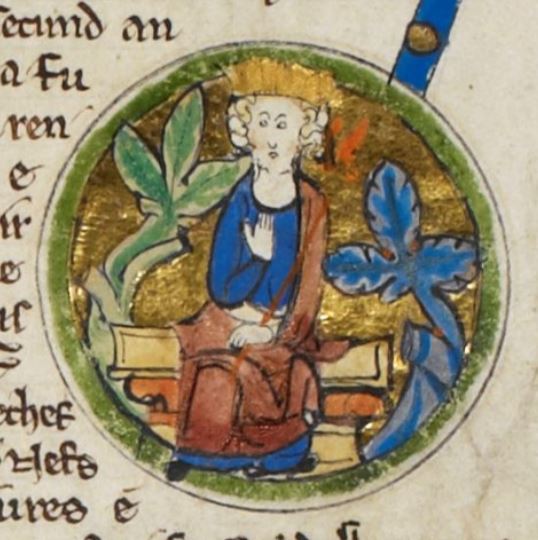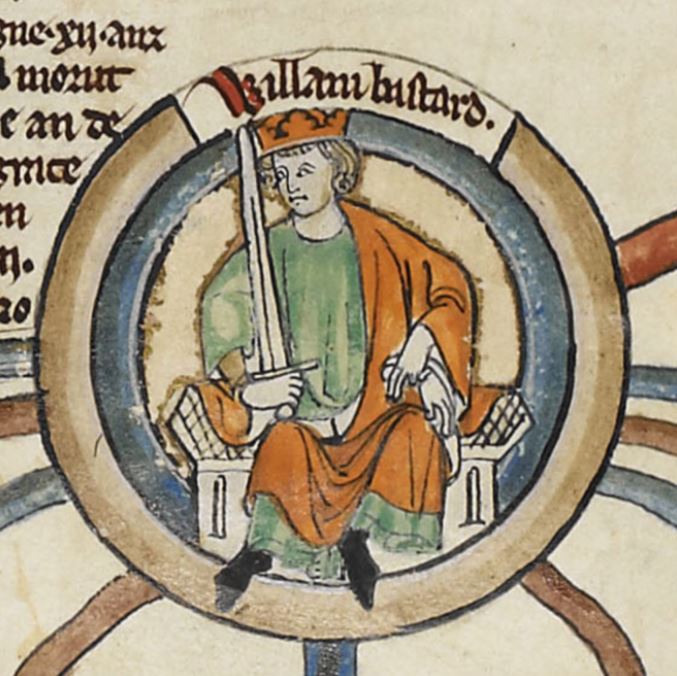By the time of his death in 1035, Cnut the Great had built an empire that seemed unshakable. England, Denmark, and Norway were united under his rule, bound by a delicate but effective balance of military power, political alliances, and religious legitimacy. The North Sea Empire appeared secure—its wealth vast, its governance stable, its king respected across Christendom.
Yet beneath this façade of permanence, dynastic fault lines were already forming.
Cnut’s carefully constructed realm depended entirely on his personal authority. He had left no clear succession plan, and his death would unleash a struggle for power between his sons, his stepsons, and the ambitious nobles who sought to control them.
As the Anglo-Saxon Chronicle subtly implies in its obituary of Cnut—praising him as ruler of England, Denmark, Norway, and part of Sweden—the crown was tied to the man, not the state. Once he was gone, the glue that held this pan-Scandinavian polity together quickly dissolved.
Within three decades, this instability would lead to the complete collapse of Cnut’s dynasty—and pave the way for an even greater upheaval: the Norman Conquest of 1066.
- 1. Dynastic Division: The Succession Crisis Begins
- 2. Harold’s Seizure of Power and Emma’s Gambit
- 3. Harthacnut’s Reign and the End of Cnut’s Line
- 4. The Confessor and the Return of the West Saxons
- 5. Normandy in Turmoil: The Rise of William the Bastard
- 6. The Storm Builds: England on the Brink
- 7. The Collapse of Cnut’s Dream: 1066 and Its Roots
- Final Thoughts: From North Sea Empire to Norman England
- Further Reading
1. Dynastic Division: The Succession Crisis Begins
Cnut’s failure to designate a single, undisputed heir created immediate fractures.
He had sons by two women: Harold Harefoot, by Ælfgifu of Northampton; and Harthacnut, by Queen Emma of Normandy, a descendant of the Norman ducal house and widow of Æthelred the Unready. Each son represented a different political and cultural faction.
Harold, raised in the Danelaw traditions of central and northern England, was favored by many English nobles, particularly in Mercia and Northumbria.
Harthacnut, groomed in Denmark and raised with a strong sense of legitimacy through his mother’s royal status, enjoyed support from the Danish aristocracy and the Church.
Initially, an uneasy compromise was brokered: Harold would serve as regent in England while Harthacnut remained in Denmark securing his rule. But this arrangement was fragile and short-lived.
2. Harold’s Seizure of Power and Emma’s Gambit

By 1037, Harold had consolidated enough support to be declared king of all England.
Harthacnut’s inability to travel to England—due to threats in Scandinavia—allowed his half-brother to act decisively. Emma, suddenly marginalized, fled to Bruges. England was soon divided not between foreign invaders and natives, but between rival claimants to a fractured Anglo-Danish crown.
In a desperate bid to regain influence, Emma invited her sons by Æthelred—Edward and Alfred—back from exile in Normandy. She hoped that their return would either bolster her standing or destabilize Harold’s rule. But the effort backfired.
Alfred was captured, reportedly by Earl Godwin of Wessex, and was brutally blinded, dying shortly afterward.
Edward narrowly escaped and returned to Normandy, embittered and wary.
This incident deepened the blood feuds that would haunt English politics for decades. It also permanently tainted Godwin’s reputation—though he would survive politically and even thrive under successive kings.
3. Harthacnut’s Reign and the End of Cnut’s Line
In 1040, Harold died—perhaps of natural causes, though whispers of foul play persisted.
Harthacnut arrived in England to claim the throne. However, his brief reign (1040–1042) was marked by cruelty, heavy taxation, and political miscalculations. He exhumed Harold’s body and cast it into a fen—an act that horrified both the Church and the nobility.
His aggressive tax policies, intended to fund a possible invasion of Norway, alienated many of his subjects. When Harthacnut collapsed and died suddenly at a wedding feast in 1042—likely from a stroke—his death marked the end of Cnut’s male line.
With no surviving sons or brothers to claim the crown, the English nobility turned to the only remaining male heir of royal blood: Edward, Emma’s son by Æthelred.
4. The Confessor and the Return of the West Saxons

Edward the Confessor’s reign (1042–1066) symbolized a restoration of the West Saxon dynasty.
His kingship brought an official end to Danish rule in England and introduced a new political dynamic, heavily influenced by his long exile in Normandy.
Norman courtiers, clerics, and customs soon found favor in Edward’s court.
But Edward’s reign was anything but tranquil.
Childless and introspective, the king failed to produce an heir, and his political reliance on Norman advisors stirred resentment among powerful Anglo-Saxon nobles—particularly the Godwin family, who had grown rich and influential under Cnut.
Earl Godwin’s power reached new heights when his daughter, Edith, married Edward in 1045.
His son, Harold Godwinson, emerged as the king’s most capable general and administrator and by the early 1060s, Harold had effectively become the second most powerful man in England—perhaps even the de facto ruler.
5. Normandy in Turmoil: The Rise of William the Bastard

While England staggered under dynastic uncertainty, Normandy was undergoing its own crisis.
Duke Robert I died in 1035, the same year as Cnut, leaving behind his illegitimate son, William, a child of only eight.
The duchy descended into chaos. Rival nobles rebelled against William’s rule, and attempts on his life were numerous.
But William, showing remarkable resilience and cunning, survived. By 1047, he had crushed the rebellious Norman barons at the Battle of Val-ès-Dunes with assistance from King Henry I of France. In the process, William consolidated his power and began building the formidable state that would one day challenge England itself.
6. The Storm Builds: England on the Brink
By the 1050s and early 1060s, the memory of Cnut’s stable reign had faded.
England, under Edward, was a realm increasingly divided along cultural and political lines. While the West Saxon court was dominated by Norman influence, the nobility remained deeply Anglo-Danish in character.
The Godwins, in particular, represented the lingering legacy of Cnut’s empire—pragmatic, martial, and distrustful of foreign influence.
Edward’s failure to produce an heir exacerbated tensions. Various contenders watched from across the sea. In Normandy, William claimed Edward had promised him the throne. In Norway, King Harald Hardrada believed he could revive Cnut’s imperial ambitions. And in England, Harold Godwinson positioned himself as the only man capable of defending the kingdom.
7. The Collapse of Cnut’s Dream: 1066 and Its Roots
Cnut’s empire had collapsed not due to external invasion, but because of its internal contradictions.
The absence of a robust succession system, combined with factional rivalries and the personal nature of medieval kingship, led to its fragmentation. His sons ruled briefly and disastrously; his widow’s attempts to control the succession failed; his noble supporters turned on each other.
By the time of Edward’s death in January 1066, England was a ripe target.
Harold Godwinson’s rapid coronation was immediately contested by two claimants: Harald Hardrada of Norway, invoking Viking rights and Cnut’s legacy, and William of Normandy, asserting a promise from Edward and a dubious oath from Harold.
In September 1066, Harold defeated Hardrada at Stamford Bridge—only to face William three weeks later at Hastings. On October 14, 1066, Harold fell in battle, and the Anglo-Saxon age came to an end.
Final Thoughts: From North Sea Empire to Norman England
Cnut the Great forged a vast empire that briefly united England, Denmark, and Norway. But the lack of institutional stability and clear succession mechanisms meant it could not outlive him. His sons proved incapable of holding it together, and his political heirs—like Godwin and his sons—pursued their own interests.
By the time William the Conqueror seized the English throne, he was not simply a foreign invader but the ultimate beneficiary of decades of dynastic collapse and political fragmentation. His conquest closed the chapter opened by Cnut and began a new era—one in which England would be irrevocably tied to continental Europe.
The fall of Cnut’s dynasty was not the end of empire-building in England. It was the prelude to a greater transformation—proof that in the medieval world, no empire could survive its founder unless it learned to govern beyond his grave.
Further Reading
If you enjoyed this article, you may enjoy these:
- Cnut the Statesman: The Transformation from Viking Warlord to Christian Emperor
- Queens and Power: The Women Behind King Cnut’s Empire
- Cnut the Conqueror: How a Viking Became King of England
- Blood on St. Brice’s Day: Æthelred’s Viking Massacre
- Emma of Normandy: Queen, Pawn, and Power Broker
- The Fear of the Year 1000: Apocalyptic Anxieties
- Tribute or Treason? Æthelred’s Gamble with the Vikings
- The Anglo-Saxon State: How England Built Europe’s Most Centralized Medieval Government
- Kings and Queens of England Ranked from Worst to Best
- Why was the crowning of Charlemagne so important?






